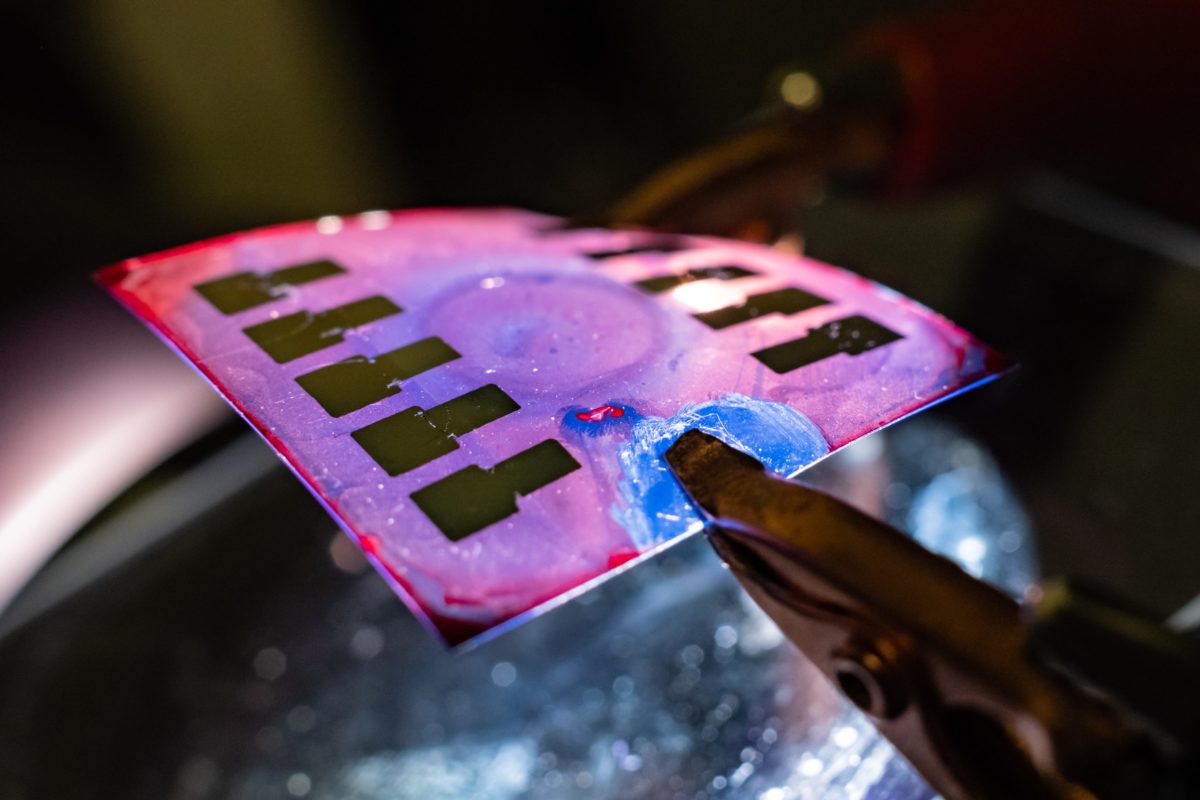The innovations in this technology, recently published in the ‘Chemistry of Materials’ academic journal, relate to advances in the current mode of OPV’s, ‘Bulk Heterojunction’ cells.
The breakthrough research, revealed by Rafael Verduzco and his research team, was focused on increasing the mechanical stability of OPV cells through incorporating an internal elastic network, raising structural support, rendering cells more flexible and thus enhancing their resilience to the normal wear-and-tear scenarios of commercial technologies.
Organic polymer solar cells, in comparison to more widespread silicon ones, are lighter-weight, inexpensive and easier to dispose of, yet major disadvantages include lower conversion rates and high breakage potential.
‘Bulk Heterojunction’ OPV modules, which are brittle, fragile and prone to cracks in the active layer of such cells – leading to efficiency issues and common performance failure over time – have suffered in their commercialization.
Although comparatively under-performing energy conversion rates have been a key factor in OPV’s lagging innovation journey thus far, with rates topping circa 15%, the durability issues of this emerging technology were often clouded by researchers’ eyes being ‘deep into the efficiency lens’.
Regarding their findings, Professor Verduzco commented, “The field has been obsessed with the efficiency chart for a long time. There’s been an increase in efficiency of these devices, but mechanical properties are also really important, and that part’s been neglected. If you stretch or bend things, you get cracks in the active layer and the device fails.”
The Rice team addressed these structural inefficiencies by creating chemical reactions in the organic polymers using prominent Thiol-ene reactions, which crosslink with each other, forming a much more complex structure- a “Network Stabilized OPV”.
In a move away from current approaches to address the brittleness of OPV cells, incorporating external support enhancers, Verduzco’s ingenuity was to enhance the structure using common bio-chemical engineering processes, greatly reducing potential production costs of more durable OPV’s.
Popular content

Chemistry of Materials article 'Network-Stabilized Bulk Heterojunction Organic Photovoltaics'
However, there are trade-offs between conversion rates, i.e. solar cell efficiencies, and the durability of OPV’s – a central feature of the research being to find the equilibrium point between these factors.
If a cell is too flexible, by having an extra-dense network, the electric current being conducted could be dropped to a point where the OPV would be more or less rendered obsolete in its performance capacity.
In the commercialization of a new technology, vital in the innovation of a product, the long-term sustainability must be measured against its productive output. The technology was thus tested using ‘crack-onset strain measurements’ coupled with OPV efficiency tests to find the optimal percent of thiol-ene to include in reactions.
In a press release from the US Department of Energy-aligned Brookhaven National Laboratory, a partner to the research, Verduzco added, “At some point, it’s not practical. Even after we confirmed the network was forming, we needed to determine how much thiol-ene we needed to suppress fracture and the maximum we could put in without making it worthless as an electronic device … We found there’s essentially no loss in our photocurrent up to about 20 percent … That seems to be the sweet spot.”
The application of the research is proposed to simplify the process of stabilizing OPV’s, thereby reducing production costs and contributing to the scaling up of this technology.
This content is protected by copyright and may not be reused. If you want to cooperate with us and would like to reuse some of our content, please contact: editors@pv-magazine.com.


By submitting this form you agree to pv magazine using your data for the purposes of publishing your comment.
Your personal data will only be disclosed or otherwise transmitted to third parties for the purposes of spam filtering or if this is necessary for technical maintenance of the website. Any other transfer to third parties will not take place unless this is justified on the basis of applicable data protection regulations or if pv magazine is legally obliged to do so.
You may revoke this consent at any time with effect for the future, in which case your personal data will be deleted immediately. Otherwise, your data will be deleted if pv magazine has processed your request or the purpose of data storage is fulfilled.
Further information on data privacy can be found in our Data Protection Policy.